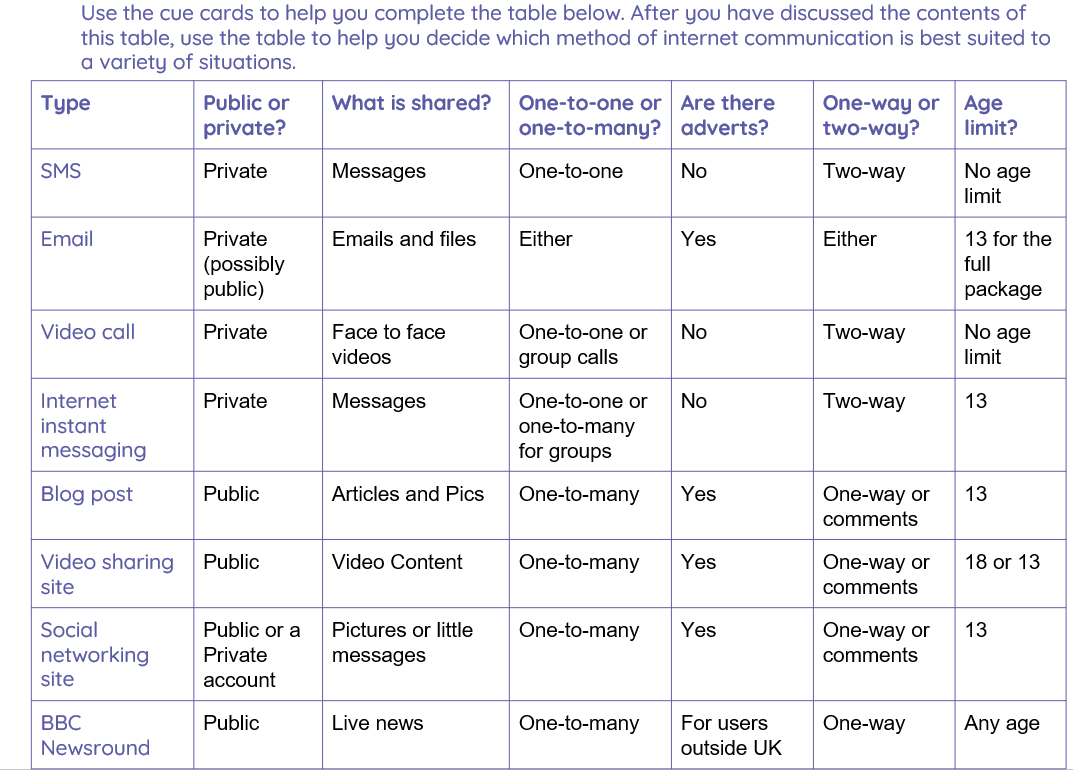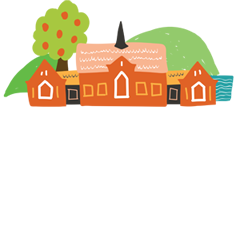Welcome to the Year 5 and 6 ICT page.
Scroll through to see what your children have been up to in their weekly Computing lessons.
2024-2025
Term 6 - Programming B - Sensing - BBC Micro bits
The children have been sending and receiving messages using the micro chat option in micro:bits. They have been writing code to enable this to happen using different radio groups within the class.
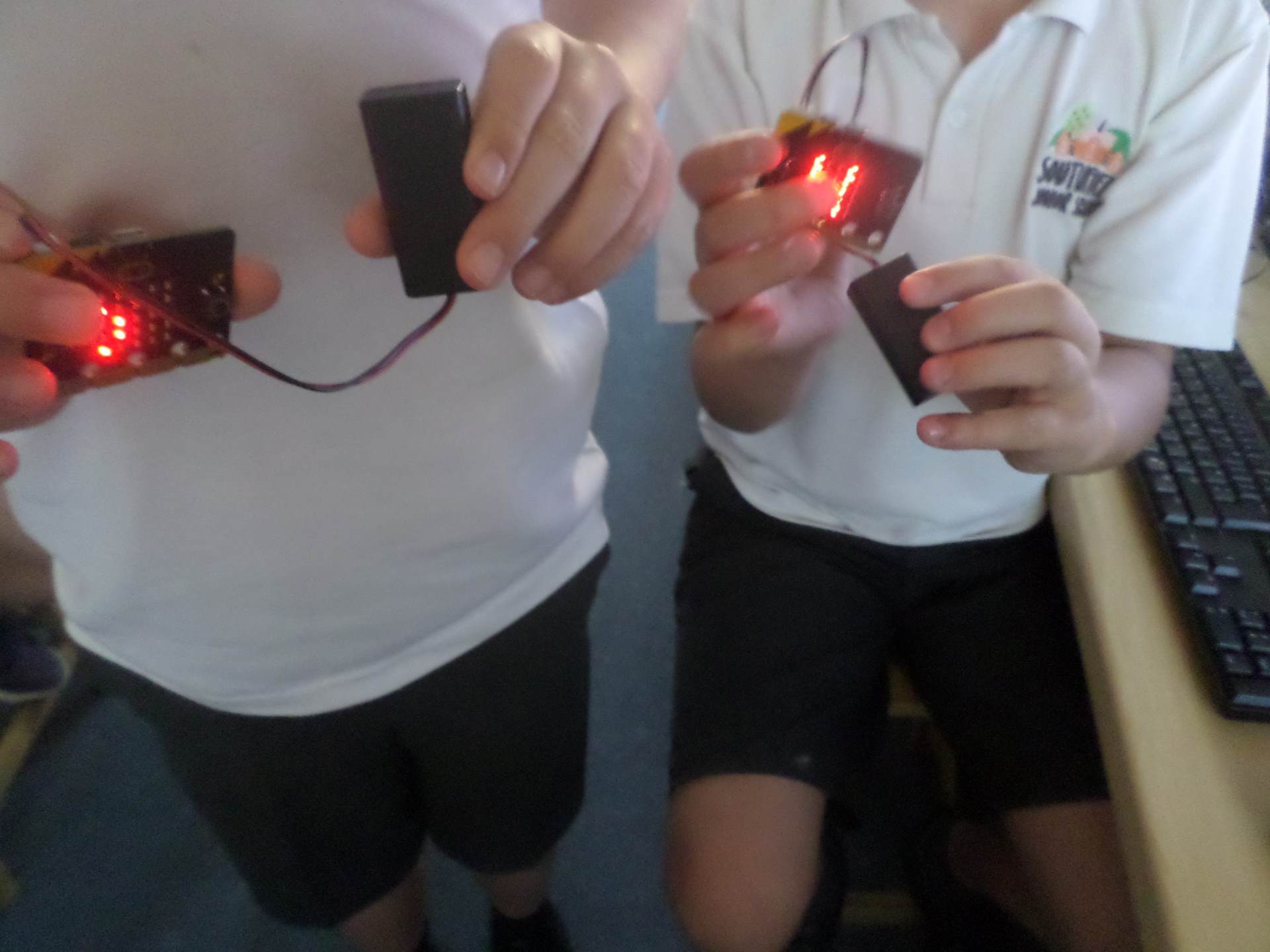
We introduced 'if, then, else' statements to direct the flow of a program. We related those statements to real-world situations, before creating programs in MakeCode. Using their knowledge of 'if, then, else' statements, we created a program that features selection influenced by a random number to create a micro:bit fortune teller. The children downloaded their code then connected a battery pack so they could move around asking questions to each other with their yes, no, maybe answers.


The children were introduced to the micro:bit as an input, process, output device that they could programme. We looked at tracing programmes, then they created their own. They ran their programmes on the emulator on screen then downloaded them to their micro:bits.


Term 6 - E-Safety - Social Media Challenges
Together we looked at a video called 'Are you living an insta lie?' It showed how people can post anything on social media, truth or lies. We discussed how seeing the 'amazing' lives of other people can effect our mental health, especially if we are feeling a little down or things are not going well for us. We learned that not everything we see online is correct as people never post when things are bad or boring.
Term 5 - Creating Media - 3D Modelling
The children have been evaluating their models. Then they modified them to make improvements.



We have been learning all about the job of an architect and the responsibilities that job holds. The children have started to design their dream buildings. Their calculations need to be correct so lots of maths skills are used, even thought they don't realise they are using those skills! Some of their designs are amazing. I am really looking forward to seeing their finished builds.


The children were introduced to dimensions in Tinkercad which enabled them to accurately resize and move shapes. They were then introduced to placeholders which they used to create holes in objects. The children, with their new knowledge and skills, created a 3D desk tidy, which they had a lot of fun creating and it was not as easy as it looks!
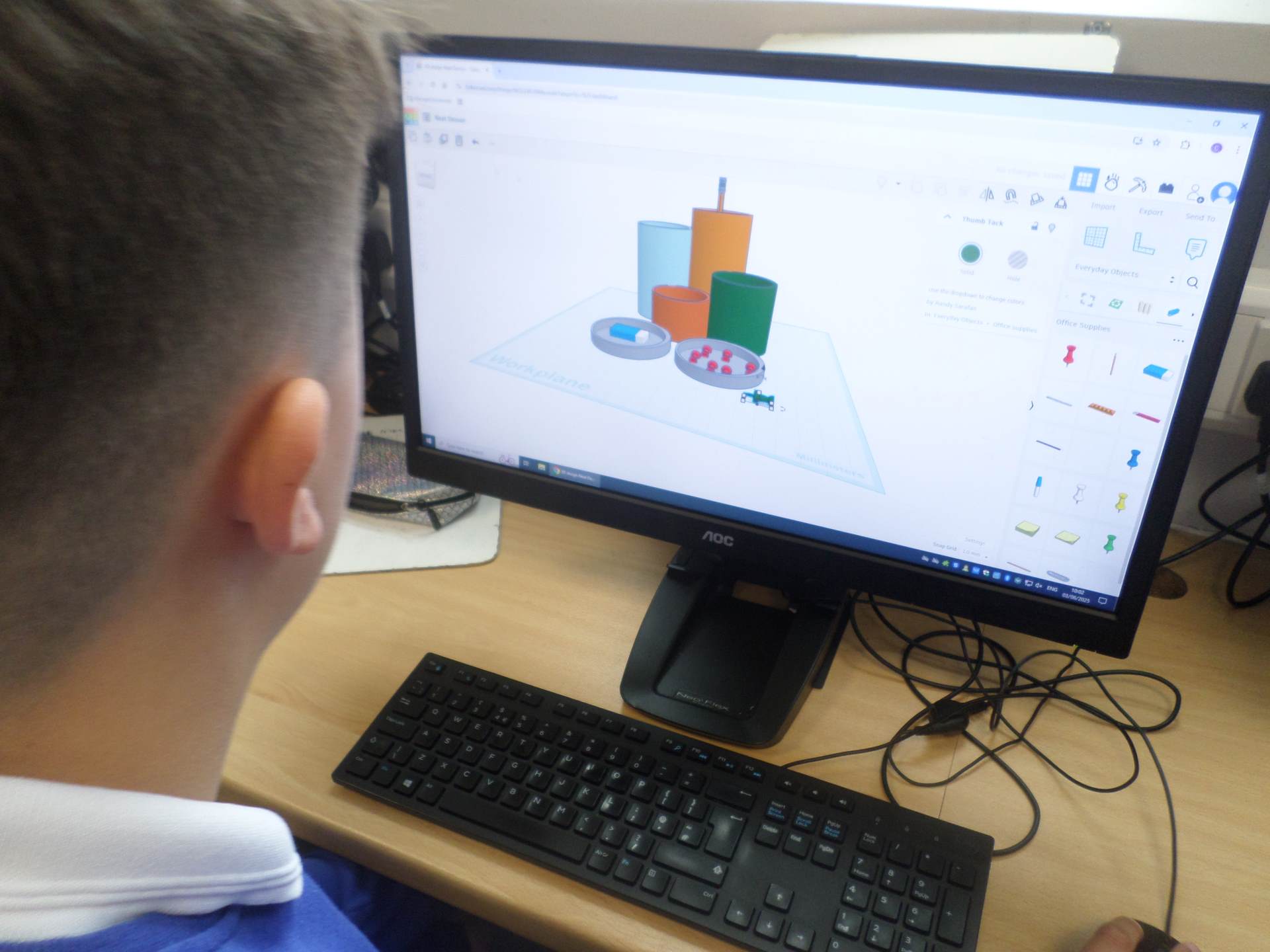
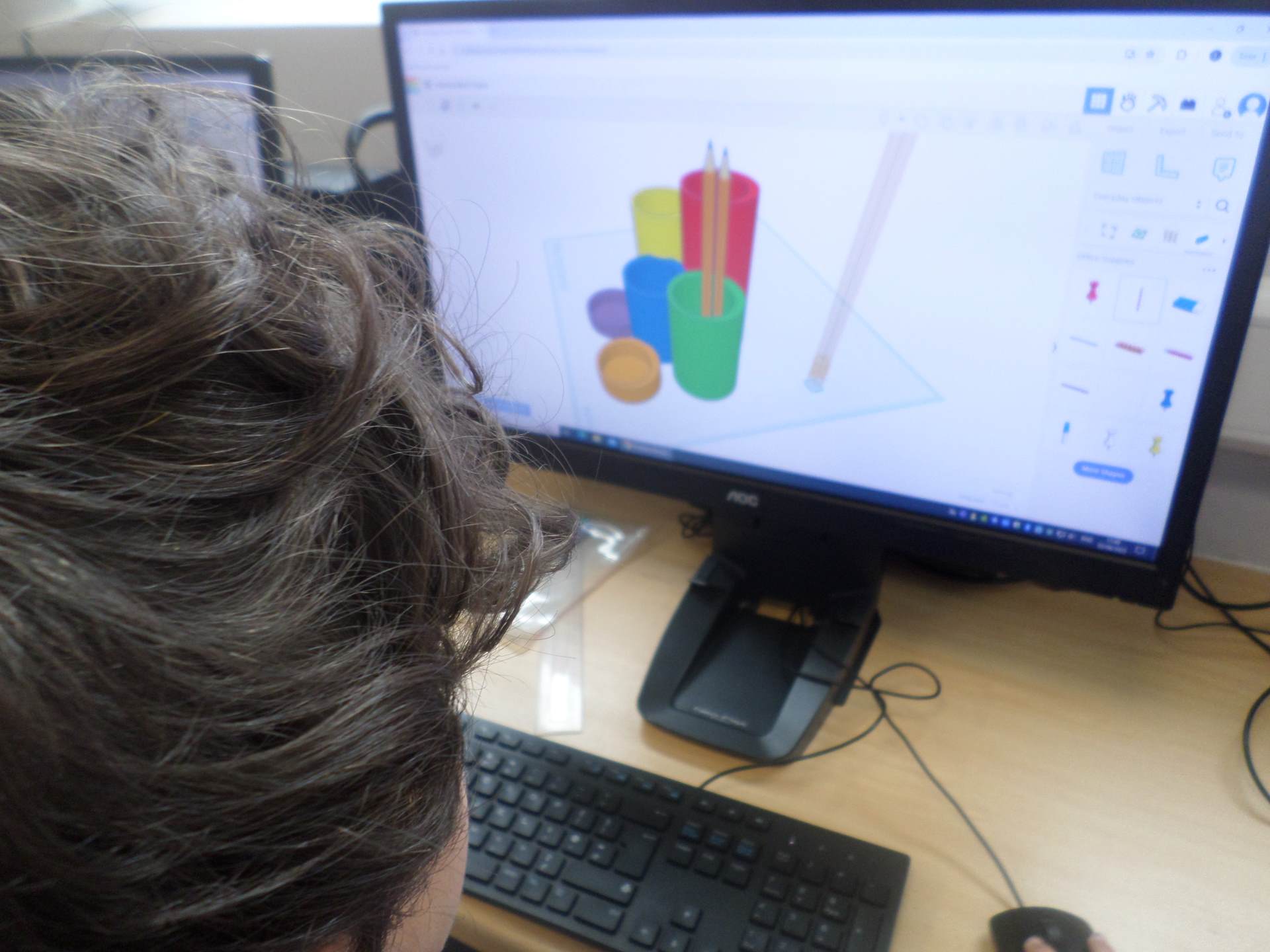
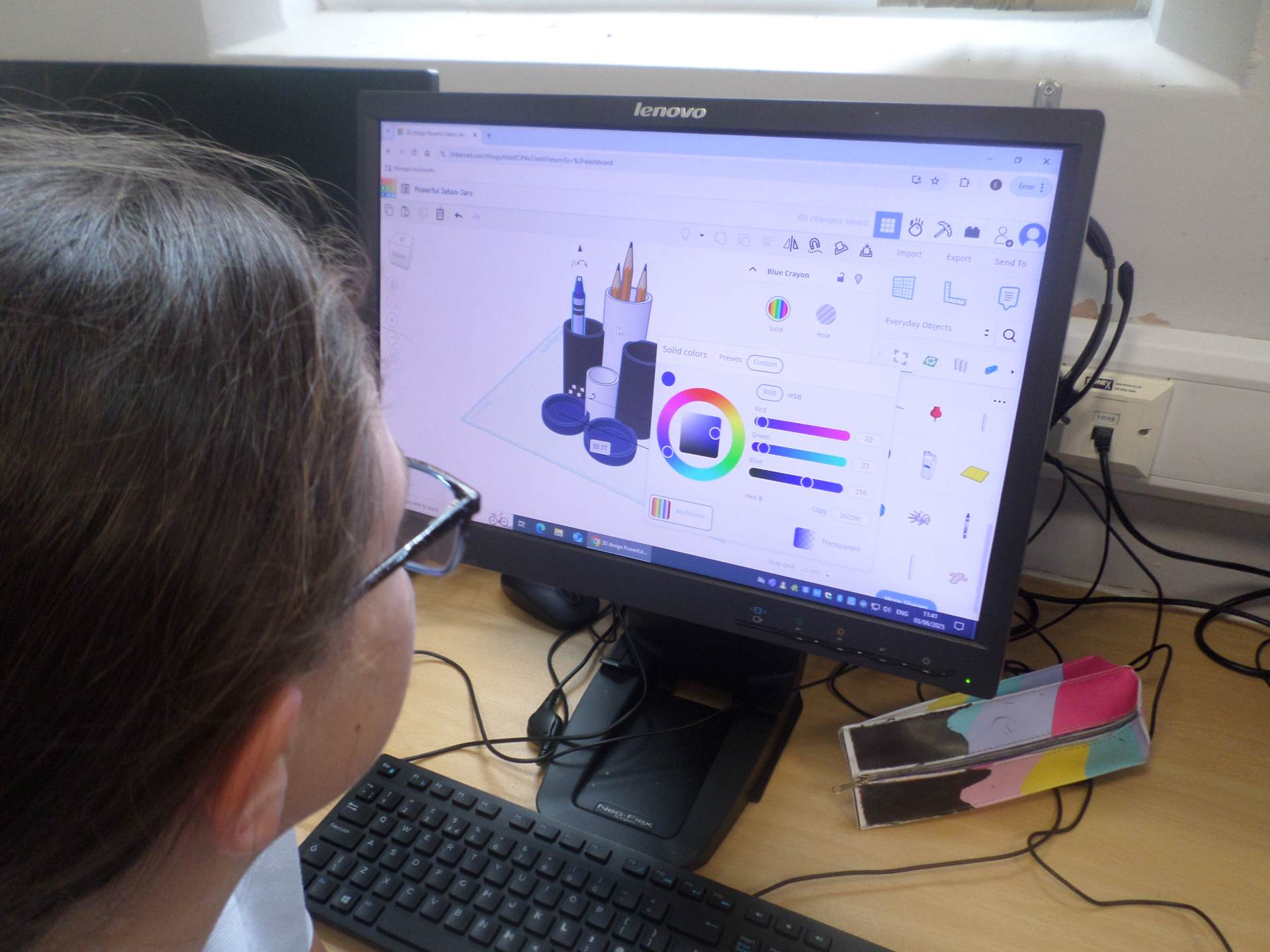
In this lesson the children learned how to rotate their objects in three dimensions, duplicate objects and then use grouping and ungrouping to manipulate many objects at once. They combined these skills to create their own 3D name badges.
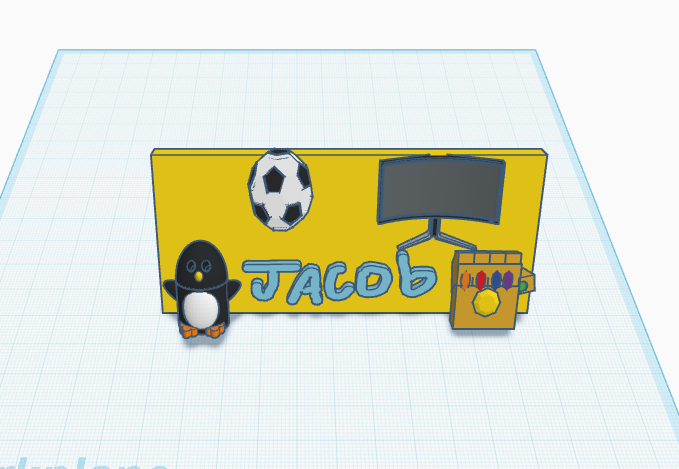

The children were introduced to the concept of 3D modelling by creating a range of 3D shapes that they selected and moved around their workplane.
Next, they learned how to manipulate their 3D objects digitally. They resized objects in one, two and three dimensions, then they they recoloured their objects.
Term 5 - E-Safety SMARTbots
The children have been revisiting the SMART acronym on how to stay safe in the internet. They created posters using a SMARTbot to help remind others how to stay safe online using SMART (Safe, Meeting, Accepting, Reliable and Tell)


Term 4 - Data and Information - Excel Spreadsheets
With their new knowledge of spreadsheets, the children were tasked to plan and end of year event for all pupils in years 5 and 6. They chose their activities, venues, food and drinks then added formulas to complete their spreadsheet. The example below still needs to be finished (a job for next lesson!) but you can see the amount of work that has gone into creating their event.


Using the four operations of multiplication, subtraction, division, and addition, the children learned how to create formulas in a spreadsheet. They saw the importance of creating formulas that include a range of cells and the advantage of duplicating in order to apply formulas to multiple cells. They understand that by doing this it prevents mistakes.
The children used Auto Sum to calculate the total scores and averages on a 6 week times table test for 6 children.
Well done Arabella.

Then using a much larger spreadsheet (83 rows) they created formulas to calculate the total stock sold and income subtotal for items sold in a shop over a week. They then used auto sum to calculate the total income.
Well done Leon.

What's the formula? We introduced formulas to produce calculated data. We discussed that the type of data in a cell is important (eg. numbers can be used in calculations whereas words cannot). We created formulas to use in our 'school trip' spreadsheet using cell references so that the inputs would change the output of the calculation.

To further develop their understanding of the structure of spreadsheets, the children were introduced to cell references, data items and the concept of formatting cells. We looked at different ways cells could be formatted eg number, date, time, currency and general. The children entered data from their survey into Excel, on how they travelled to school then applied the correct formats.
Some of the children even added graphs using their prior knowledge.

The children collected data, throwing and recording dice throws five times, in groups. They collected the data and wrote it into a structured table.

We looked at the advantages and disadvantages of recording data in this way.
Then we input the data into an Excel spreadsheet and did the same. The children formatted their work and input formulas to add their totals. Once they had done this they created a graph of their data.

Term 4 - E-Safety - Girls and Boys Online - Stereotyping
The children have been discussing what 'stereotype' means and learning how gender stereotyping can be harmful in a media message. We looked at different careers and asked the children to draw and name a person they thought would work in that job. It was interesting that the majority of children stereotyped the people in the jobs as either male for firefighters, mechanics or Dr's but female for teachers and nurses. Here are a few that did think outside the box!
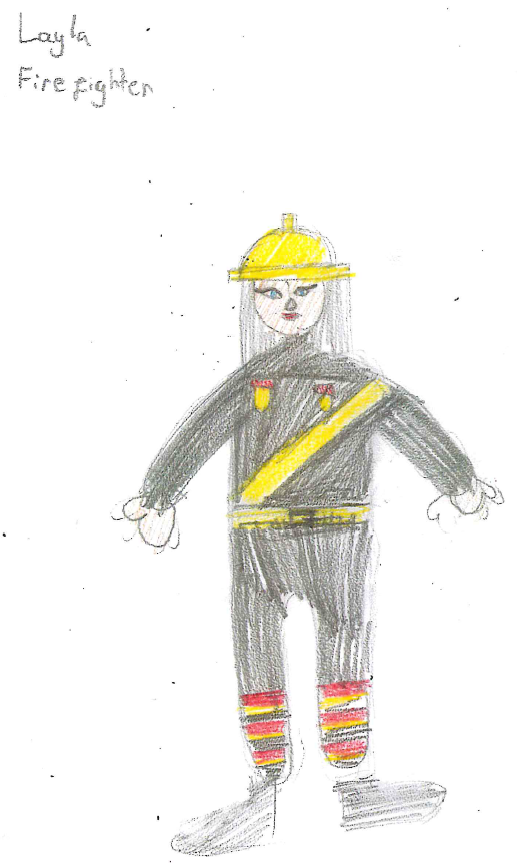
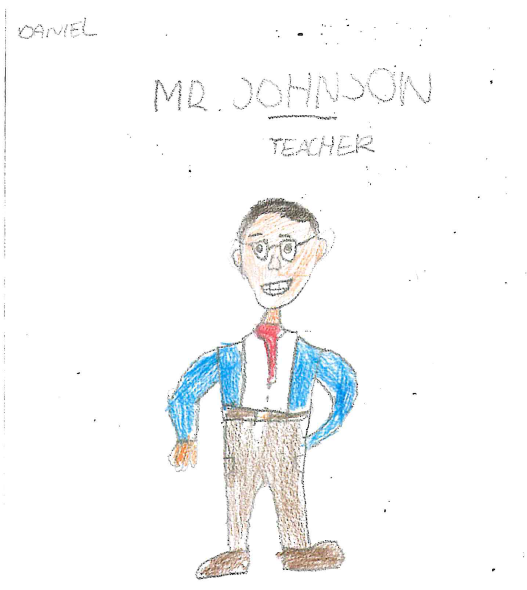



We also looked at words that might be used to describe a boy or a girl and how most of them could actually be used to describe both genders.

We discussed that no one should feel isolated or ashamed of their choices in life and that everyone is different.
Term 3 - Variables in Games - Scratch
On their final week, the children were given the opportunity to improve their projects. They watched 3 very different games that had been created in Scratch and took ideas to implement into their games. They were really challenged with creating extra variables and code but had a lot of fun doing it. It was really lovely to see the children helping each other and sharing their skills. It all paid off when we had a visit from Mrs O'Sullivan who thoroughly enjoyed playing their finished games. Well done years 5 and 6.
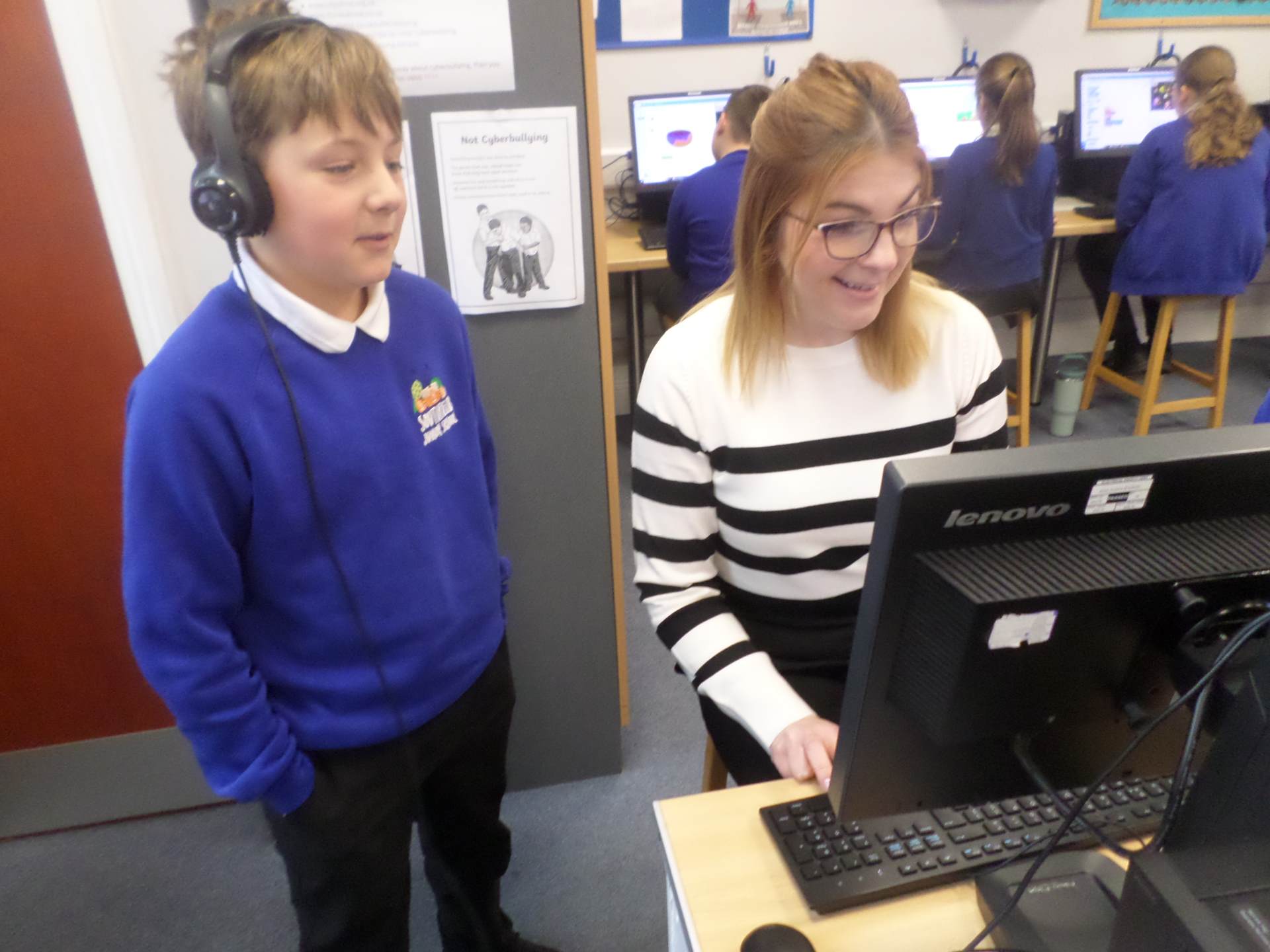
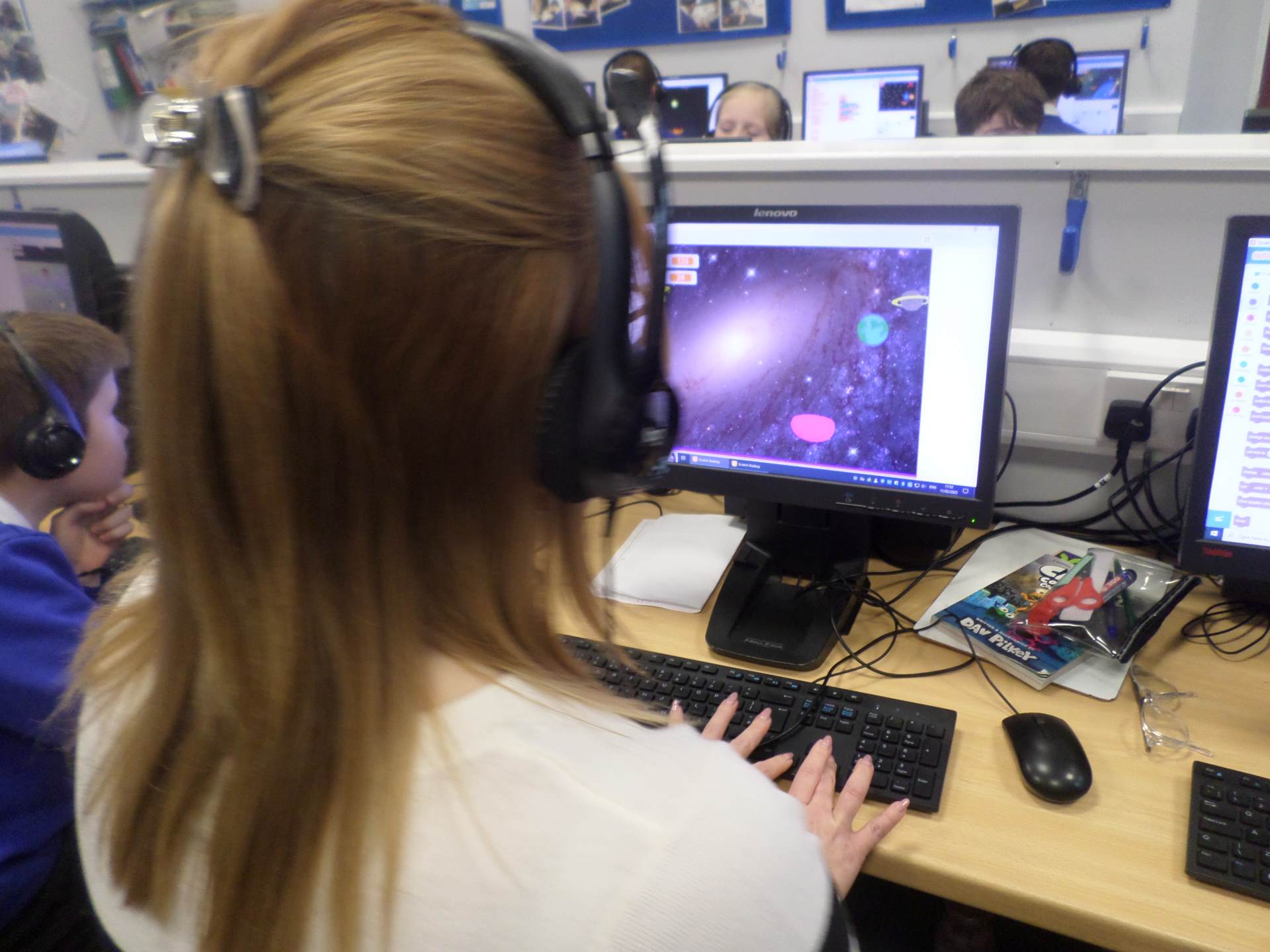
Following on from last week the children designed the remainder of their games.

When they had completed their design sheet they opened their saved Scratch project from last week. Once they had written the algorithms for their two new sprites they played their games to decided if any tweaks were needed. Their games were fantastic and all very different. They had time to play each others, then we watched some on the board.
As you can see from the game below, I didn't get a very good score. The red stars kept taking my score away. Well done Sylvie, brilliant planning and a fantastic game.
/i/video/sylvie_.mp4
The children played an already created game in Scratch. On the basis of that game, the children have been tasked with designing a game of their own. Firstly they had to choose the sprites and background for their game. They will continue next week writing and adding the algorithms needed for each sprite. To make their games more interesting and fun they will need to remember to make their sprites fall at different speeds and change their scores and size.


We applied the concept of variables to enhance an existing game in Scratch. They predicted the outcome of changing the same 'change score' block in different parts of a program, then they tested their predictions in Scratch.
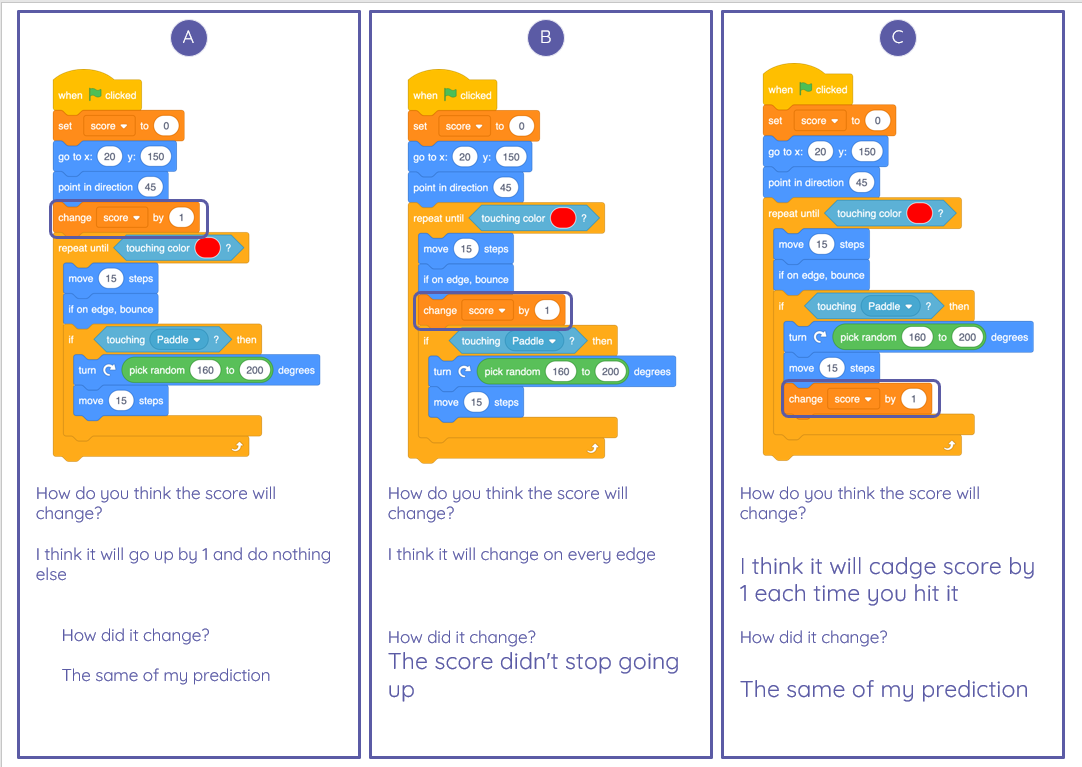
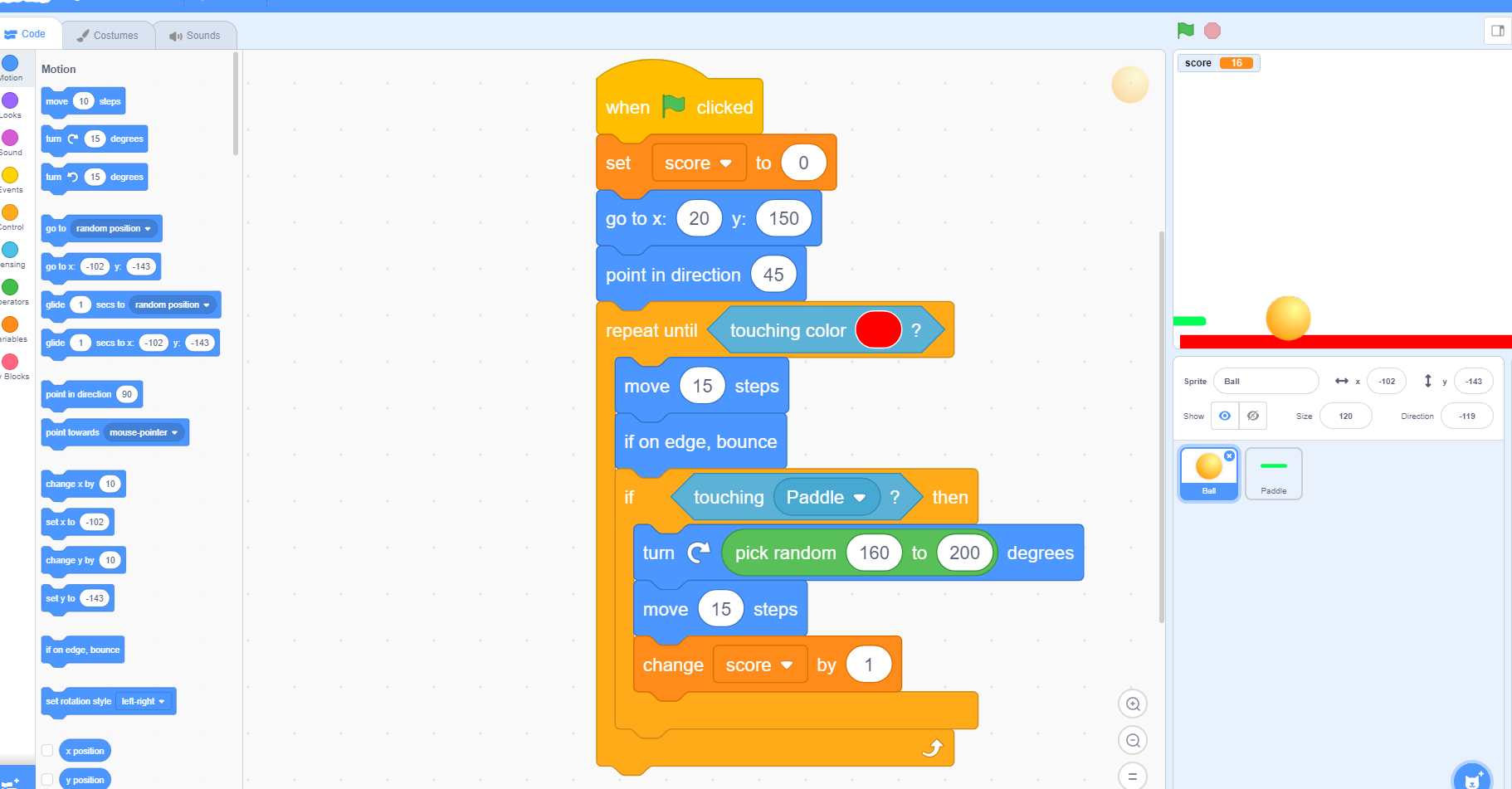
Now that we know that variables are used in programs, and that they can only hold a single value at a time, the children completed an unplugged task to demonstrate the process of changing variables.
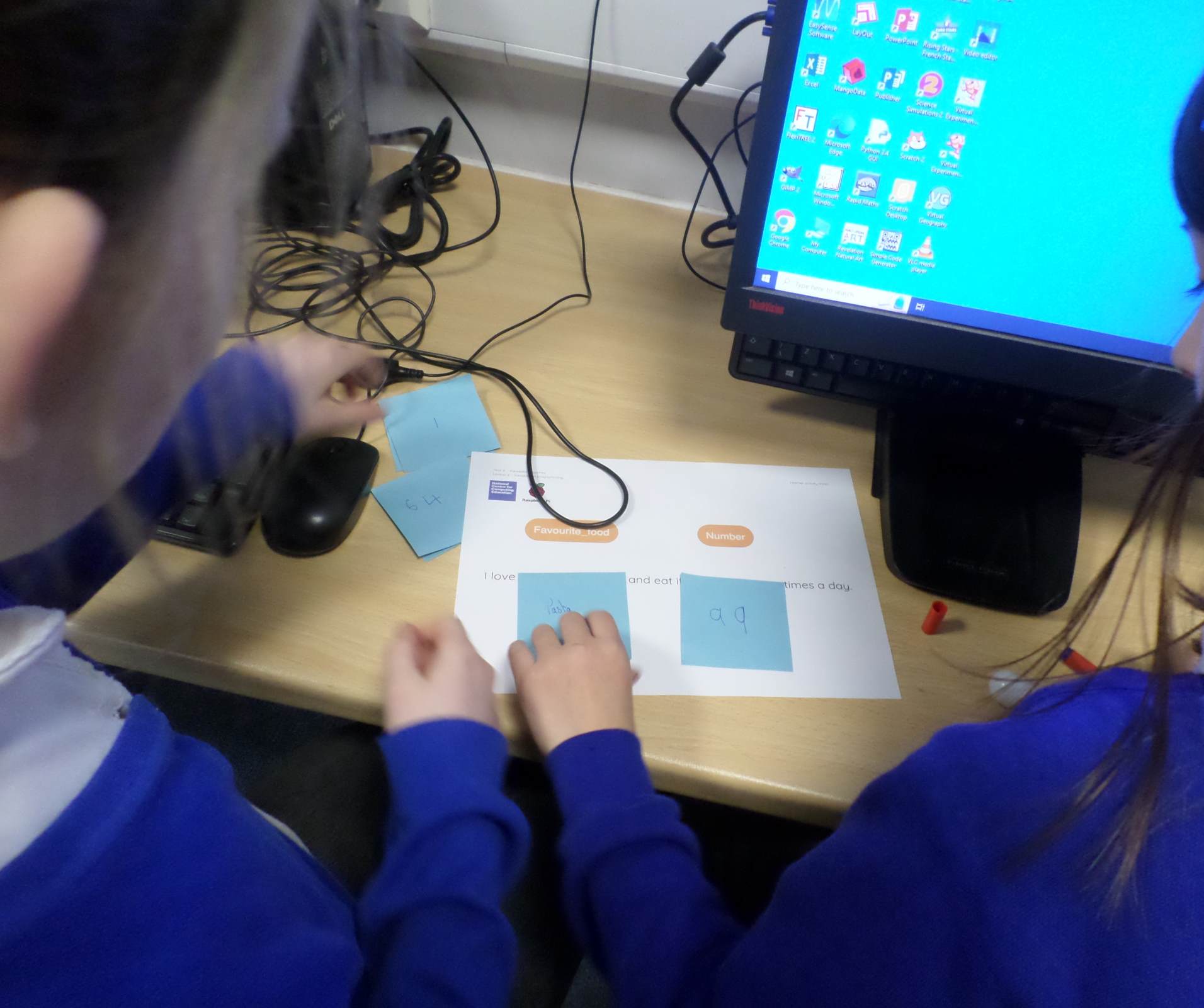
We then looked at the importance of naming variables then the children created a Scratch project where they made, named and updated their variables.

This term we introduced variables. Firstly we looked at real-world variables (score and time in a football match), then we explored them in a Scratch project. The children then designed and made their own project that included variables. We added a score to our projects and some children managed to also add time as a variable too.
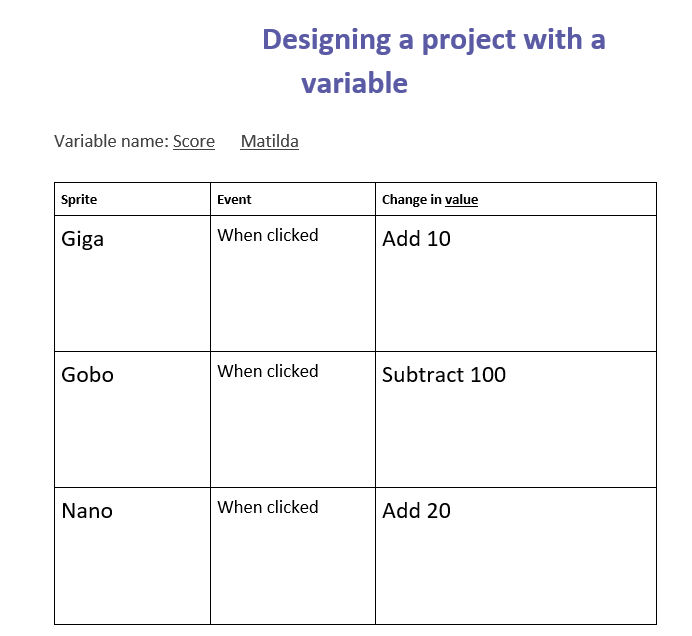

Term 3 - E-Safety - People Online
We have been looking at the benefits and pitfalls of online relationships. We identified what information should never be shared, what personal information is and what to do if something online makes you feel uncomfortable.
We identified that most of the children in year 5/6, who use gaming sites, frequently talk to strangers within their gaming platforms. We discussed that just because we are truthful, not everyone is and their 'online friends' may not be who they say they are.

The children identified things that were safe and unsafe to share online. They also looked at 3 different online chats to spot where the person had given away personal information by mistake.
Term 2 Creating Media - Webpage Creation
The children put finishing touches to their Websites, then they published them. We discussed the safety of publishing work on the internet, then they shared them via email to other children in their class.
Here are a couple of finished sites, which I hope you will agree are fantastic.
VileVictoriansNow that the structure of their websites are in place, the children added their information, then added hyperlinks to link their pages together as was detailed in their original planning. They should be very proud of the work that they are creating.


What does 'copyright' and 'fair use' mean? We looked at the importance of following copyright and crediting others for their work. We discussed how they would feel if someone stole their work without permission and took all the credit.
In groups the children looked at 7 different scenarios and debated the ethics and issues around copyright. They made decisions on whether they were right or wrong to copy and share pieces of work.
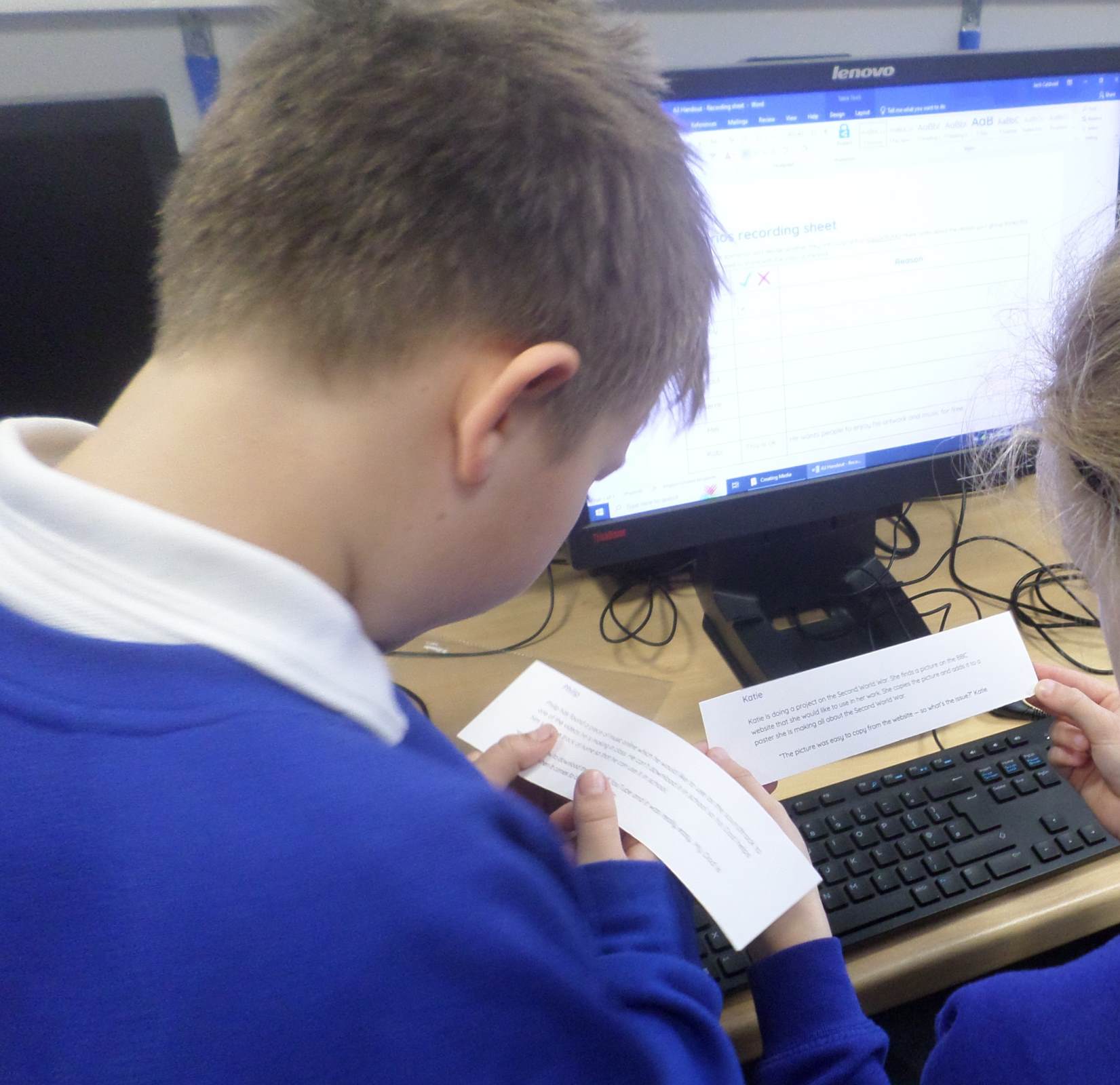
The children, using their plans, started to create their Victorian Websites. They added suitable text, backgrounds and colours for their webpages. They also added their first subpage, linking it with a hyperlink.
The children are really enjoying working with Google Sites.


What is a web designer?
The children considered the attributes they would need to become a web designer. Then they logged onto Google Sites and had a play with the software learning about the tools available to them. Then they set about planning their web page on paper. The children will be creating a web page on The Victorian Era. Watch this space!


What makes a good website?
The children were exploring and reviewing existing websites to evaluate their content. We looked at our own Southfield Junior School website and San Diego Zoo's website.

Then we learned that websites are made with a special code called 'HTML' The children inspected the code on the websites then had some fun changing it.
Term 2 E-Safety - Secure Websites
The children looked in the address bar of websites to check for security. They identified the lock symbol and https to show that the website is secure. They also looked for privacy policies and logos to try to identify if the website was secure or not. They were able to identify warning signs that a website might not be secure.
The children then created a fact file to help others use websites safely.
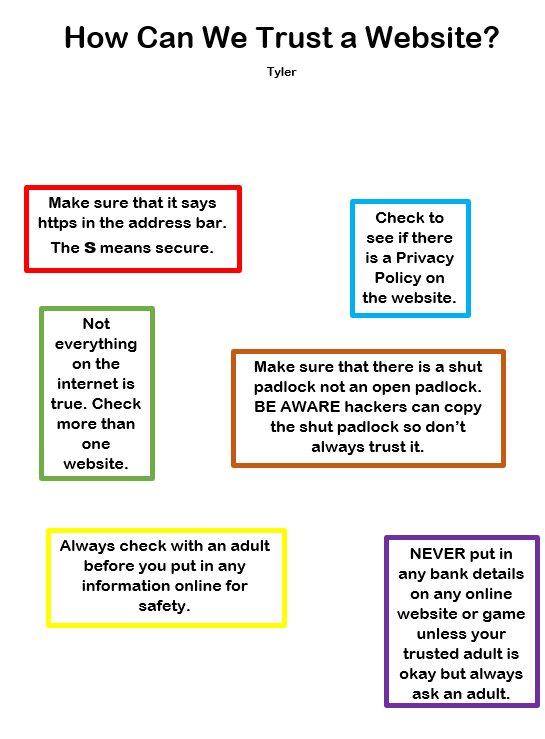
Term 1 E-Safety - Artificial Intelligence
The children have been looking at how we all use Artificial Intelligence (AI) in our lives today. They compared the advantages and the disadvantages and more importantly, how to stay safe when using it. Does your device listen to every conversation you have!
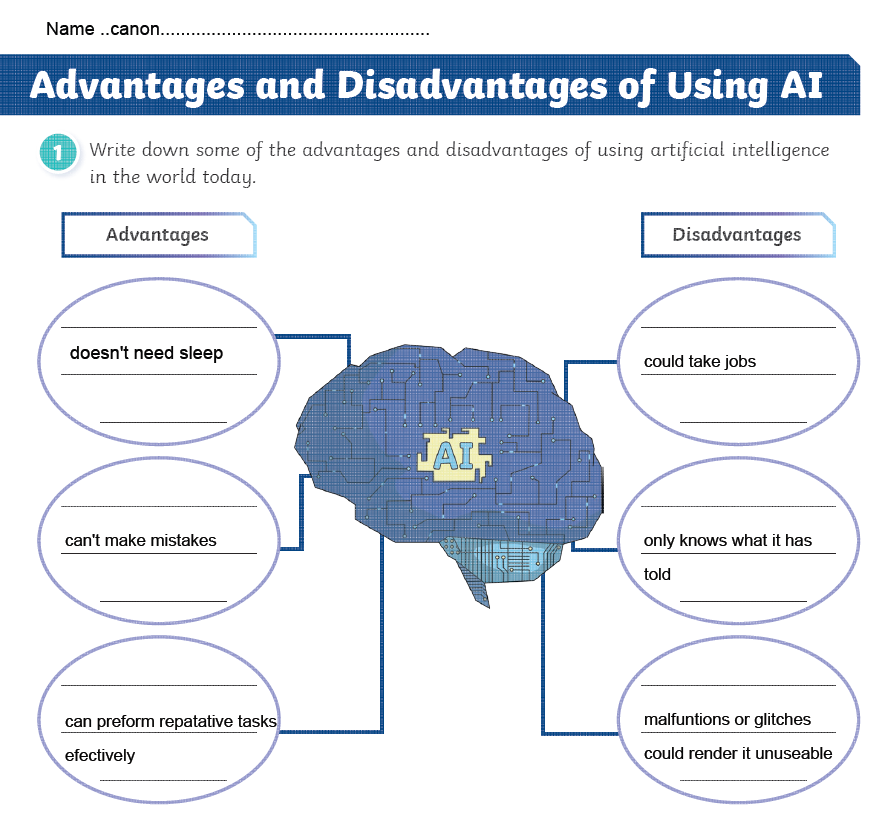
Term 1 E-Safety - Cyberbullying
We have been reminding the children how to use technology safely, respectfully and responsibly. How to recognise acceptable and unacceptable behaviour and identify a range of ways to report concerns about content. We have compared cyberbullying to bullying in person and looked a strategies for dealing with online bullying.
The children got into groups and discussed a range of cyberbullying scenario cards then gave feedback on how they thought the scenarios should be dealt with.
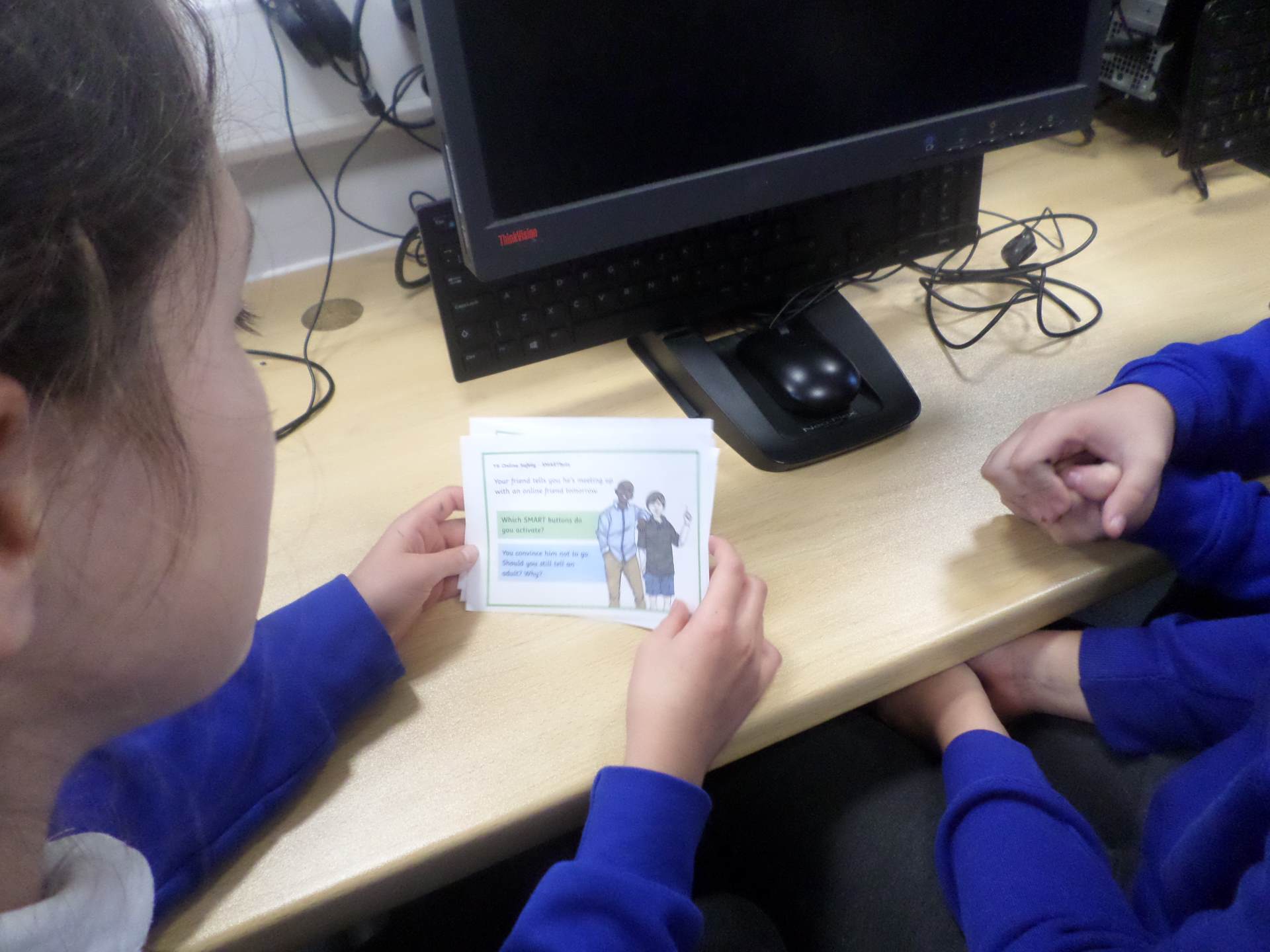
Term 1 Digital Science - Communication and collaboration
We started this topic by looking at Internet addresses and why it is important to have agreed protocols. The have been looking at IP addresses and the rules (protocols) that computers have for communicating with one another. We have also been learning about the role of the Domain Name Server (DNS) which translates web addresses into IP addresses.

The children were introduced to the concept of packets. They completed an activity based on transferring text across the internet using IP addresses. They also gained an understanding of the key parts of a packet: the header and the data payload.
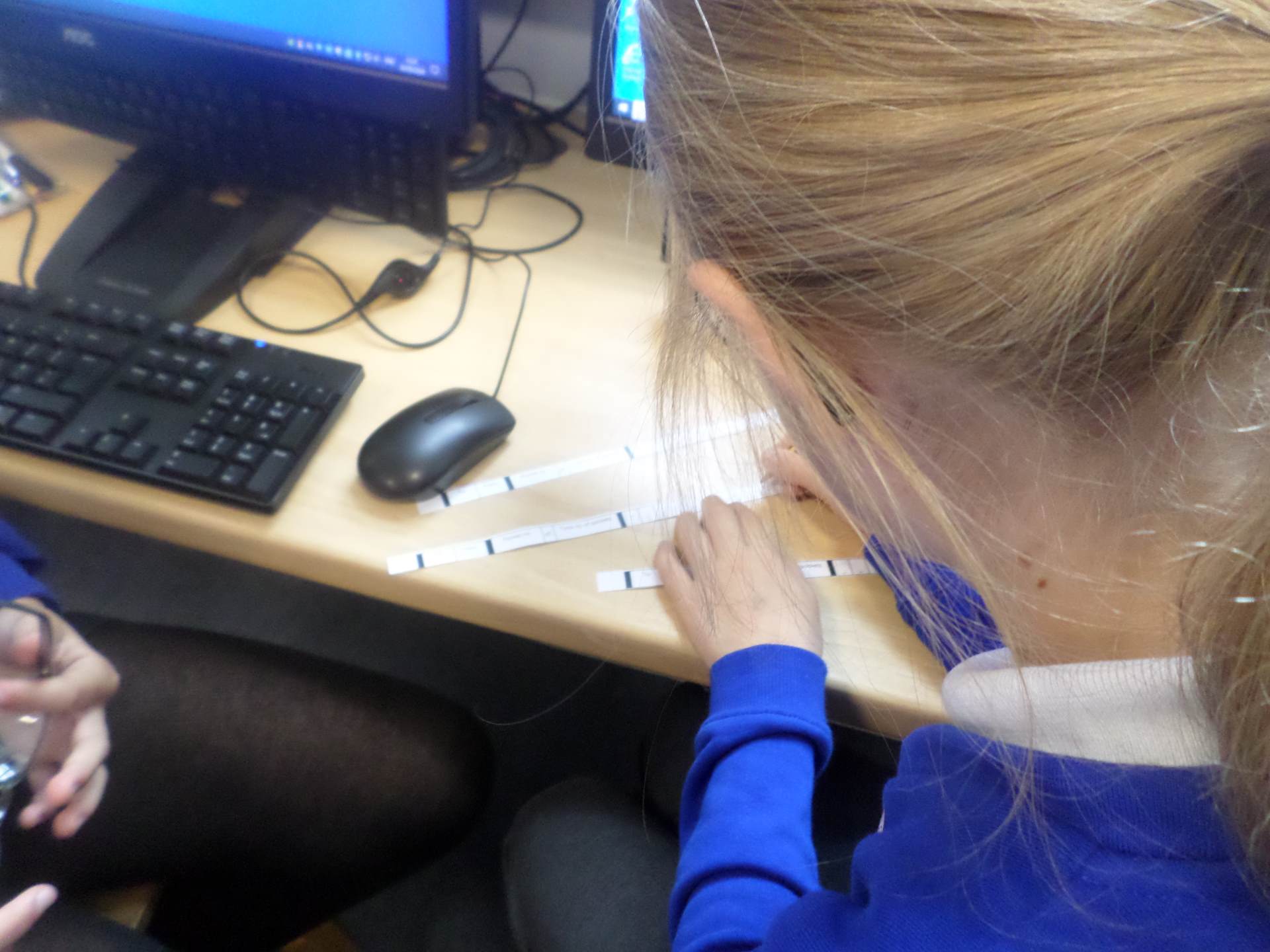

The children have been learning how people can work together when they are not in the same location. The children worked in pairs choosing a country to work collaboratively on. They each created two slides in PowerPoint, then emailed them to their partner to share their ideas and complete the presentation.
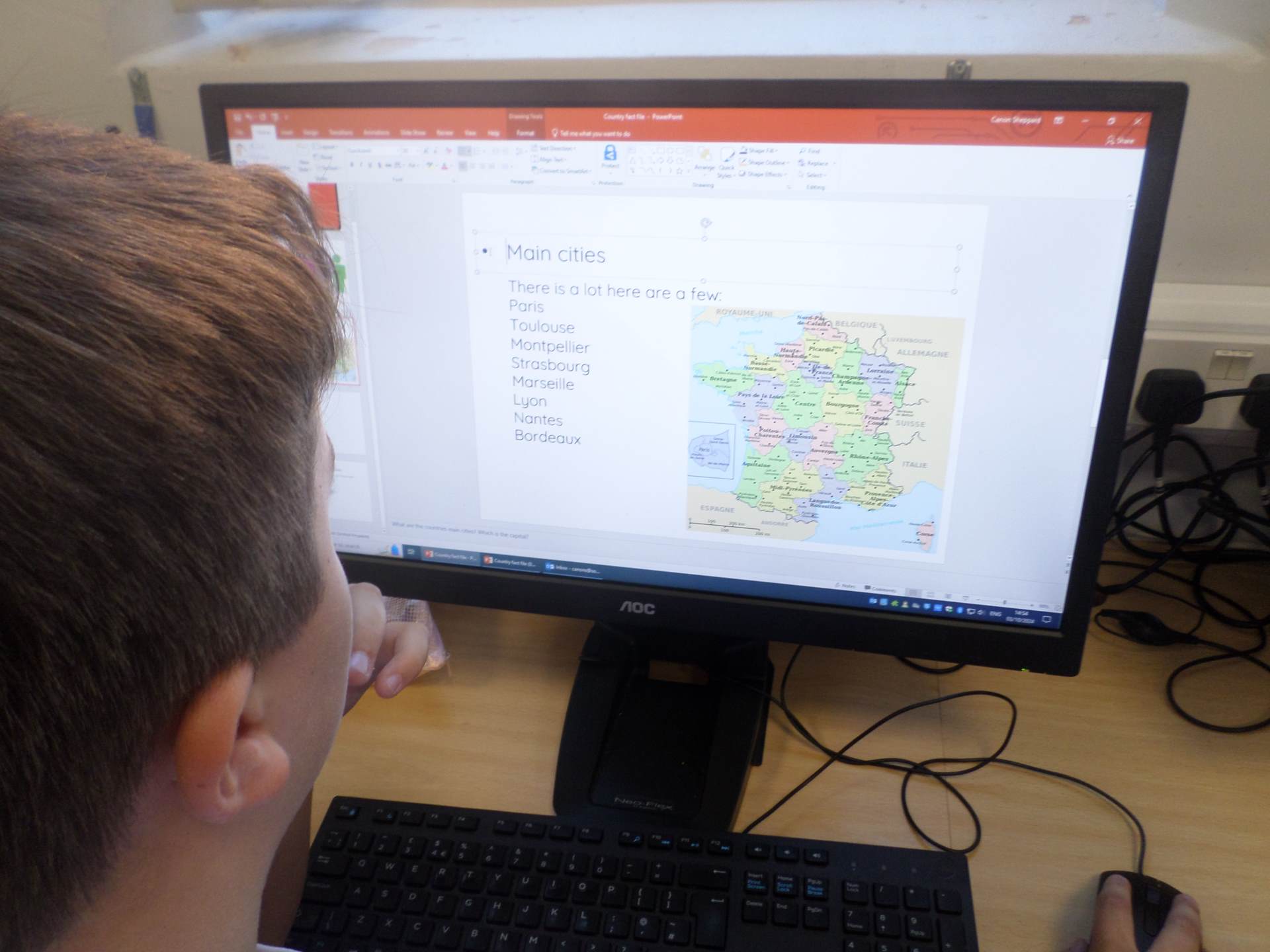
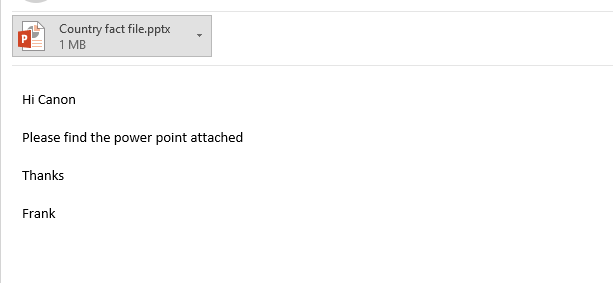
Today we were looking at reusing and modifying work done by someone else. Firstly, each child was given 3 minutes to start a drawing a picture. It was then passed it to someone else who was given a further 3 minutes to enhance and finish the drawing. Some of the pictures were brilliant but they found that there were limitations to what the could do.


Then the children opened an existing Scratch animation and saved to their own files. Once they had done that they set about changing and enhancing the animation.
We asked the question: Is it always ok to use someone else's work.
The children recognised that it is not always ok and that it needs to be within the bounds of copyright and with the relevant permissions.
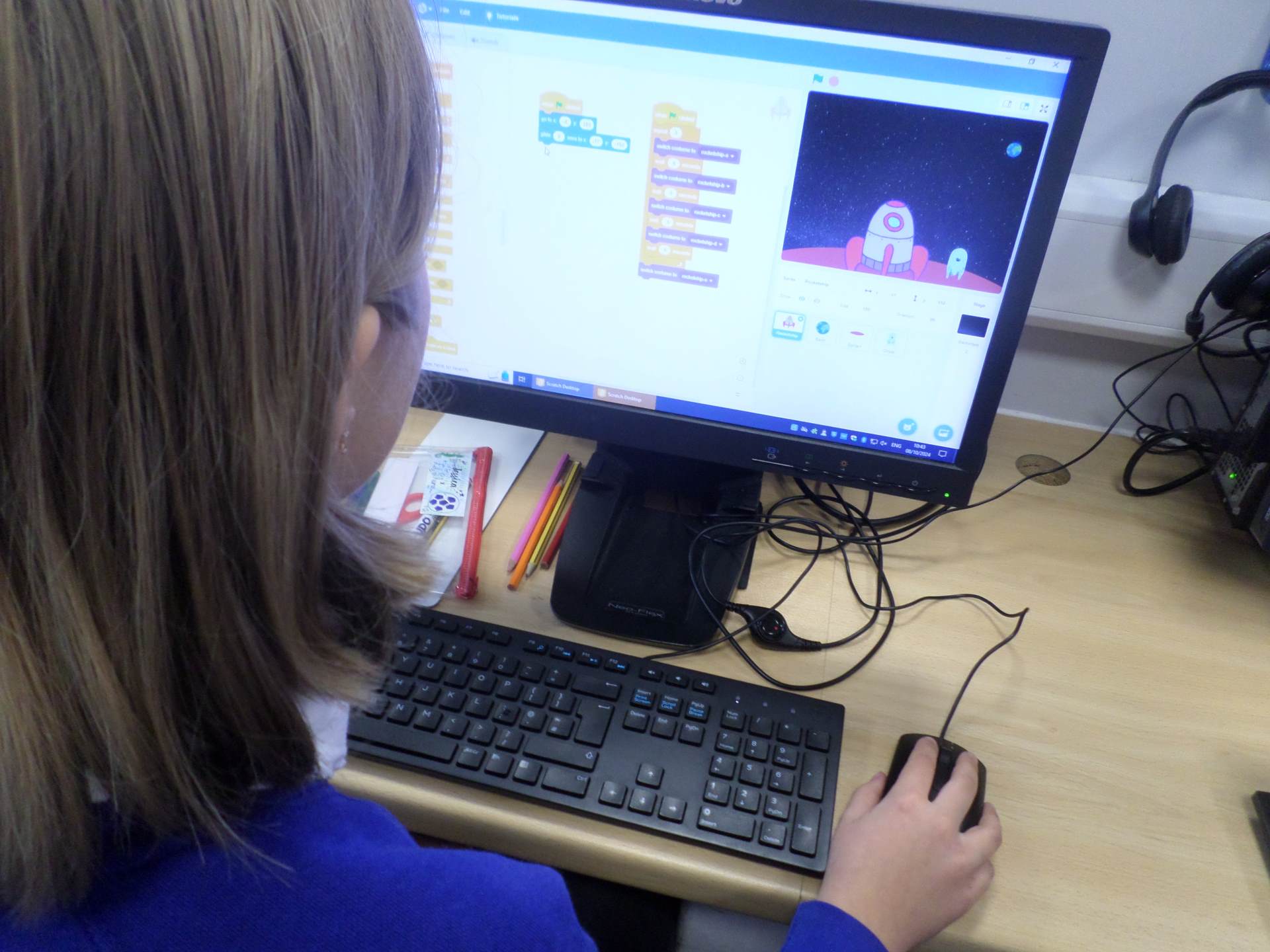
Exploring different methods of communication to deepen their understanding of the term 'communication', the children had to think of as many ways as possible of communicating the word 'yes', Then they had to think about how they would say it to a person who was not in the same room as them.
We then created a list of ways in which people can communicate over the internet. In groups they were given a scenario and they had to work together to create a mind map of the many different ways that their message could be communicated.


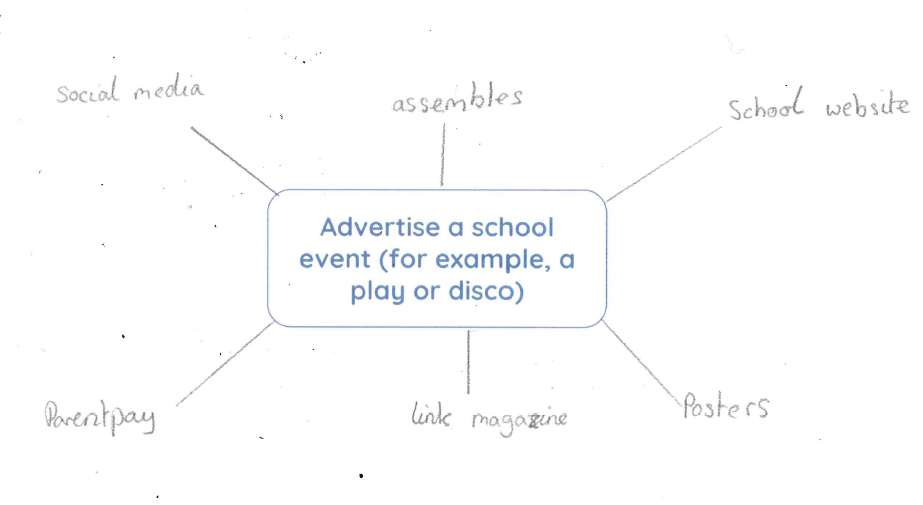
Using their own prior knowledge, the children categorised different forms of internet communication. They also explored issues around privacy and information security.
Brilliant research Dan.
